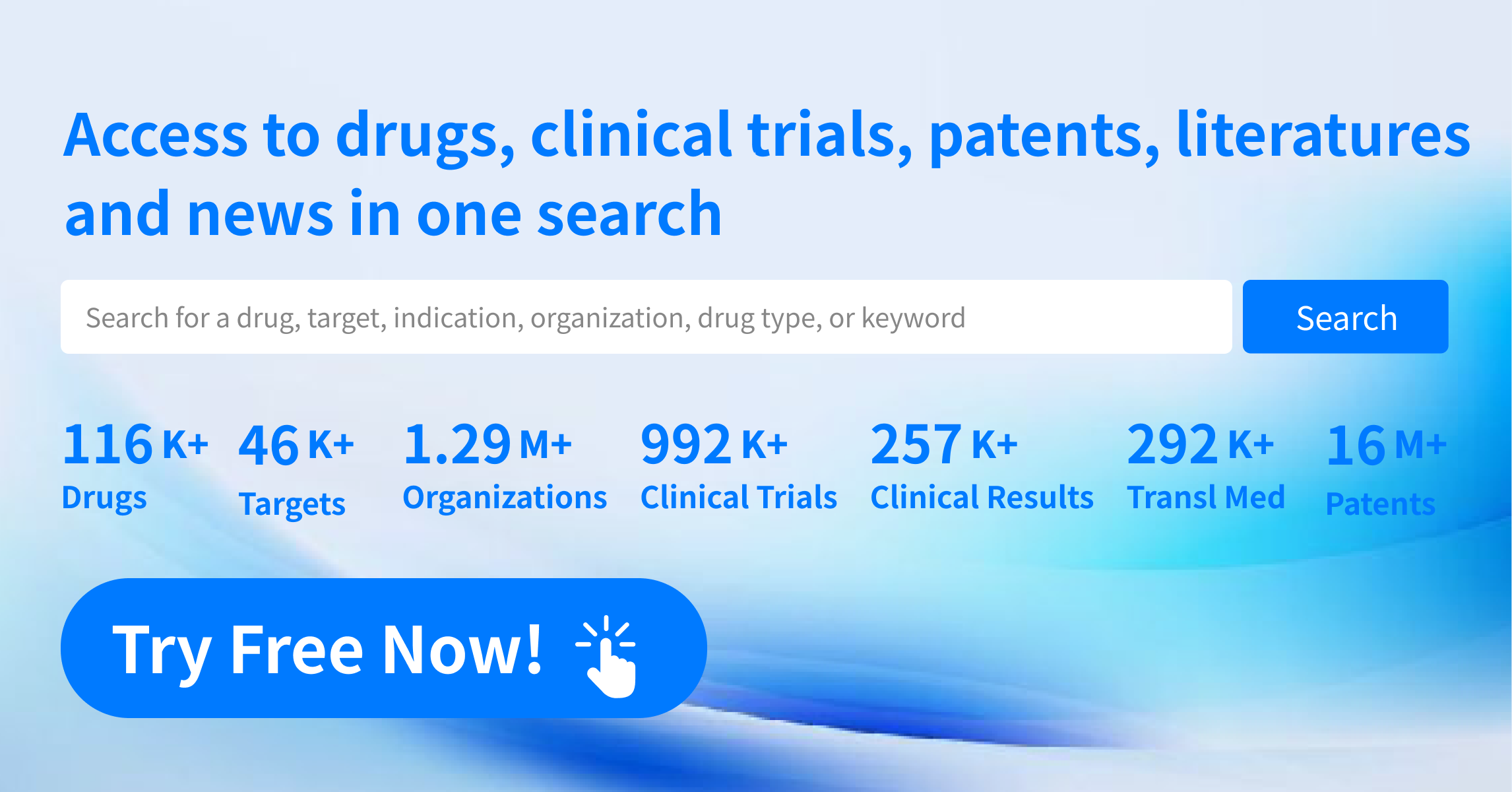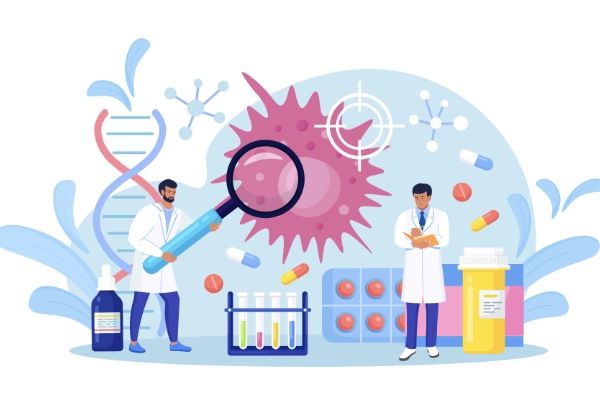From Courtrooms to Compliance: Johnson & Johnson’s Fight to Survive the Talc Powder Scandal
Johnson & Johnson, the 138-year-old global healthcare giant, with its iconic baby powder becoming a household staple across generations. However, beginning in the 1990s, the company was swept into a mounting legal crisis centered on allegations that its talc-based products caused cancer—a controversy that would eventually grow into one of the largest product liability litigations in U.S. history.
As of 2025, over 38,000 plaintiffs worldwide have filed lawsuits, with cumulative claims exceeding $50 billion.
This crisis transcends legal compensation. It strikes at the heart of corporate responsibility, scientific uncertainty, and public trust. Johnson & Johnson’s attempts to mitigate risk through bankruptcy restructuring have repeatedly been rejected by courts. Meanwhile, its stock price has suffered, brand reputation has deteriorated, and ripple effects have shaken the broader healthcare sector.
This article traces the evolution of the talc controversy through a detailed timeline, integrating legal rulings, market data, and industry analysis to uncover its broader implications for corporations globally.
The Origins of the Talc Controversy: Scientific Uncertainty and Early Warnings
Talc’s Century-Long Success—and Hidden Risks
In 1894, Johnson & Johnson introduced its first baby powder product, promoted as a gentle, moisture-absorbing remedy to prevent diaper rash. Its key ingredient, talc—a naturally occurring silicate mineral—was prized for its fine texture and low cost, becoming a cornerstone of personal care products worldwide.
However, talc is often found in close proximity to asbestos in nature. Asbestos, a known carcinogen, can contaminate talc during mining, posing potential cancer risks through respiratory or reproductive system exposure.
Early Scientific Debate (1970s–1990s)
From the 1970s to the 1990s, concerns about talc's safety steadily grew within the scientific community, laying the groundwork for the litigation waves that would follow.
In 1971, a landmark study published in The Lancet suggested that talc particles might migrate through the female reproductive tract to the ovaries, potentially causing chronic inflammation. Although this early research did not establish a direct link between talc use and cancer, it raised preliminary concerns.
Due to limited case observations and inconclusive results, the public remained largely unaware, and companies like Johnson & Johnson made no changes to their product labels or manufacturing processes.
A major turning point came in 1982, when the U.S. National Cancer Institute (NCI) published a pivotal study tracking thousands of women, finding that those who regularly applied talc-based powders to their genital area faced a 30% higher risk of developing ovarian cancer.
This was the first large-scale study directly linking talc use to cancer, drawing attention from both scientific and regulatory communities. Johnson & Johnson responded internally; a declassified 1982 memo revealed that executives discussed the possibility of adding a warning label. However, the company ultimately decided against it, citing two primary reasons:
·First, existing studies were largely observational, making it difficult to rule out confounding factors such as genetics, smoking, or hormone use.
·Second, commercial considerations: issuing a warning could harm brand perception, and the talc product line was a core profit driver within Johnson & Johnson’s baby care division.
This decision became a critical point of contention in subsequent litigation, with plaintiffs' attorneys arguing that Johnson & Johnson "knowingly concealed potential risks."
In 1999, Diane Berg, an ovarian cancer patient from Minnesota, became the first individual to sue Johnson & Johnson over its talc products, claiming decades of use led to her illness. Although the case ended in a confidential settlement, Johnson & Johnson’s litigation strategy exposed deeper flaws in its risk management approach.
The company sought a confidentiality agreement to prevent disclosure of settlement details—an effort that ultimately failed to suppress media attention. More importantly, Johnson & Johnson clung to the defense of "scientific uncertainty," insisting that no definitive causal link had been established between talc use and cancer—a strategy that would become a recurring theme across tens of thousands of later lawsuits.
Rather than quelling public concerns, the Berg case ignited a wave of litigation. Throughout the 2000s, increasing numbers of ovarian cancer patients followed suit, challenging Johnson & Johnson’s scientific defenses and prompting renewed scrutiny of talc safety within the scientific community.
The heart of the controversy during this period lay in the interplay between scientific uncertainty and corporate responsibility:
·Early studies, limited by small sample sizes, short observation periods, and potential confounding factors, struggled to provide definitive causal evidence.
·Johnson & Johnson, rather than proactively driving further research or reformulating products, chose to rely on "insufficient evidence" arguments to protect its commercial interests.
These decisions would ultimately plunge the company into a three-decade-long legal and reputational storm, serving as a cautionary tale for global corporations navigating product safety crises.
The Division of Scientific Evidence and the Ongoing Tug-of-War
Since the 2010s, scientific evidence supporting the link between talcum powder use and cancer has steadily accumulated, intensifying the seriousness of earlier controversies. In 2013, the International Agency for Research on Cancer (IARC), under the World Health Organization (WHO), released an assessment classifying “perineal use of talc-based body powder” as “possibly carcinogenic to humans” (Group 2B). This classification, based on a comprehensive analysis of multiple epidemiological studies, suggested that talc particles could travel through the reproductive tract to the ovaries, potentially triggering abnormal cell proliferation over prolonged periods. While IARC did not establish a definitive causal relationship between talc and cancer, the designation served as an important warning to regulators and the public alike.
Further momentum came in 2018, when Epidemiology Reviews published a landmark meta-analysis compiling data from 25 global studies. It concluded that women who used talcum powder in the genital area over long periods had a 20–30% higher average risk of developing ovarian cancer. The research team emphasized a positive correlation between risk and usage frequency—women using talc more than once a week faced an even greater increase in risk. The study proposed that talc particles might adhere to the ovarian surface, leading to chronic inflammation and potentially promoting genetic mutations. However, the researchers also acknowledged limitations such as small sample sizes and reliance on self-reported data in some studies. Nevertheless, the findings galvanized consumer advocacy groups and prompted regulatory agencies to reexamine talc product safety standards.
Throughout these developments, Johnson & Johnson (J&J) maintained a consistent defense, asserting that the scientific evidence was insufficient to prove causation. Their arguments rested on two key points. First, they cited multiple inspections conducted by the U.S. Food and Drug Administration (FDA) between 2010 and 2020, which found no detectable asbestos—a known carcinogenic contaminant—in their talc products. J&J stressed that compliance with stringent FDA testing standards demonstrated that their products posed no direct cancer risk. Second, they pointed to a large prospective study published in JAMA in 2020, which tracked the health outcomes of 250,000 women over several decades and found no statistically significant difference in ovarian cancer rates between talc users and non-users. The study authors noted that previous observational studies may have suffered from recall bias or confounding factors (such as hormone therapy or smoking history), while their own research provided more robust prospective data.
Nevertheless, critics—including plaintiff attorneys and scientists supporting the link between talc and cancer—challenged J&J's position. They argued that the FDA's tests focused solely on asbestos contamination, ignoring the possibility that talc itself might cause cancer through physical irritation. Additionally, some researchers contended that the JAMA study failed to adequately control for genetic predispositions and did not differentiate between talc use on the body versus the genital area, potentially diluting the association. At the heart of the scientific debate lies the different weight given to observational versus experimental evidence, and a broader disagreement among corporations, regulators, and academics over what constitutes "sufficient evidence." While J&J emphasized the lack of direct causality, plaintiffs argued that the elevated risk alone justified warnings and compensation—fueling an ongoing clash between scientific inquiry and legal standards.
The Litigation Tidal Wave and Johnson & Johnson's Legal Battles
In the early 2000s, lawsuits alleging a link between J&J’s talcum powder and cancer were sporadic. However, as scientific evidence accumulated and public awareness grew, the number of lawsuits began to rise steadily. A pivotal early moment came in 2006, when a New Jersey court ordered J&J to pay $1.5 million in damages to the family of a woman who had died from ovarian cancer. Though modest in size, this verdict set an important legal precedent.
The true turning point arrived in 2016. That year, a Missouri court awarded $72 million to the family of Jacqueline Fox, who had died of ovarian cancer after decades of using J&J’s talcum powder. The court found that J&J had "failed to adequately warn" consumers about the risks. Extensive media coverage of the verdict sparked a surge of public concern, triggering a domino effect: the number of lawsuits ballooned from thousands to tens of thousands. Revelations from internal company documents—highlighting debates over risk disclosure—further inflamed public outrage and turned the litigation from a series of legal disputes into a full-blown public health controversy.
Facing an avalanche of lawsuits, J&J adopted a two-pronged defense strategy. First, the company funded independent studies reinforcing the position that talc does not have a direct causal link to ovarian cancer, repeatedly citing FDA testing results that showed no asbestos contamination. Second, it launched aggressive legal challenges, often questioning the scientific credibility of plaintiffs' expert witnesses. J&J achieved some notable victories, overturning several verdicts in states like Missouri and New Jersey by arguing that plaintiffs had failed to establish direct causation and criticizing methodological flaws in epidemiological research.
Despite these efforts, the litigation scale grew uncontrollably. In 2018, a Missouri court awarded $4.7 billion (later reduced to $2.1 billion) in damages to 22 women in a landmark class-action case—the largest consumer product litigation payout on record. In delivering the judgment, the judge accused J&J of having "engaged in willful misconduct" by concealing product risks for decades, intensifying the company's reputational crisis. In 2020, another California jury awarded $2.9 billion to a plaintiff who had used J&J’s talc products for over 40 years, finding that the company had "deliberately disregarded consumer safety."
These staggering financial penalties dealt a significant blow to J&J’s bottom line, cutting its 2020 net profit by nearly 10%. More damaging, however, was the erosion of consumer trust. Surveys showed that public confidence in J&J’s baby care products reached historic lows in 2020, with competitors quickly seizing market share. The combination of legal, financial, and reputational fallout turned the talc powder litigation into one of the most significant corporate crises of the decade.
In an effort to address tens of thousands of lawsuits, Johnson & Johnson (J&J) launched an aggressive “Texas Two-Step” bankruptcy strategy in 2021. The plan involved two key steps: first, transferring its talc-related liabilities into a newly created subsidiary, Red River Talc; second, having Red River Talc file for Chapter 11 bankruptcy protection under U.S. law, while proposing a $9 billion settlement fund to resolve all claims globally. However, the courts rejected this strategy three separate times.
Judges highlighted three fatal flaws in J&J’s approach. First, there were serious procedural violations — creditors were given only 11 days to vote on the plan, far less than the legally required minimum of 30 days, and critical details about the compensation scheme were inadequately disclosed. Second, there were substantive issues — J&J excluded Kenvue, its recently spun-off consumer health business, from the bankruptcy proceedings, leaving a significant gap in liability shielding and exposing the parent company to potential joint liability. Finally, the courts cited concerns over “fraudulent transfer” — the debt transfer from J&J to Red River Talc was executed without reasonable consideration, raising suspicions that J&J sought to abuse the bankruptcy system to evade legal obligations.
In April 2025, Texas federal judge Christopher Lopez rejected J&J’s bankruptcy filing for the third time, describing it as “an abuse of the bankruptcy process that harms creditors.” J&J was ultimately forced to abandon its bankruptcy strategy and return to defending each lawsuit individually.
This failure not only exposed legal vulnerabilities in J&J’s attempt to offload liabilities but also left the company facing years of ongoing litigation and the threat of massive payouts. Legal analysts estimate that if J&J loses in court, total compensation could exceed $11 billion, while annual litigation costs are projected to surpass $1 billion.
The fallout extended far beyond financial damage. In August 2025, facing a collapse in brand reputation, J&J announced a global discontinuation of its talc-based baby powder, shifting entirely to cornstarch-based alternatives. Meanwhile, Kenvue’s stock price fell 42% from its IPO level, reflecting investor concerns over lingering talc-related liabilities.
More profoundly, the J&J talc saga has become a landmark case in corporate product safety accountability. Regulators worldwide are responding: the U.S. FDA plans to mandate asbestos testing for talc products starting in 2026, while the EU is considering classifying talc as a "high-risk substance" requiring pre-market safety evaluations.
The case serves as a stark warning for corporations: in an era of radical transparency, the long-term risks of product safety and fragile public trust can outweigh short-term commercial gains. J&J’s talc crisis has evolved into a full-scale test of law, science, and business ethics.
Market Shock and Johnson & Johnson’s Strategic Retreat
Following the third rejection of its bankruptcy plan in April 2025, J&J faced an immediate collapse of investor confidence. Its stock price plunged 12.3% over two days (April 1–2), wiping out over $45 billion in market value — one of the steepest declines among S&P 500 companies. This sharp drop also dragged the S&P 500 healthcare sector down by 1.8%, sparking widespread investor anxiety about litigation risks in consumer products. Moody’s swiftly downgraded J&J’s credit rating to Aa3, warning that “litigation risks could persist for over a decade,” further eroding market trust in the company’s financial resilience.
The financial strain intensified alongside strategic contraction. The $7 billion reserve J&J had initially earmarked for bankruptcy settlements is now grossly insufficient to cover the projected $11–15 billion in potential liabilities — an amount nearly equivalent to its $13.5 billion net income in 2024, pushing the company to the brink of breakeven.
To mitigate pressure, J&J accelerated business restructuring. Although it completed the spin-off of Kenvue in 2023, Kenvue’s stock plunged 42% from its IPO price by early 2025, and its Q1 revenue declined 15% year-over-year, reflecting the lasting damage to brand equity. Simultaneously, J&J shifted strategic focus toward higher-margin businesses, investing $27.7 billion in acquisitions such as Intra-Cellular Therapies (psychiatric medications) and Shockwave Medical (cardiovascular devices) between 2024 and 2025, aiming to offset the consumer health downturn through innovation. However, these moves strained cash flow and failed to immediately reverse negative momentum.
The long-term burden of litigation costs presents an even graver survival challenge. Having abandoned the bankruptcy route, J&J must now litigate each case individually, at an average legal cost of roughly $1 million per case — translating to over $1 billion annually. If the lawsuits continue into 2035, cumulative legal expenses could surpass $20 billion, equivalent to 1.5 times J&J’s 2024 net income, severely constraining future R&D and innovation spending.
Adding to the pressure, lawsuits are expanding internationally, with cases emerging in the EU, Brazil, and other jurisdictions, exposing J&J to multinational liability risks. As a result, the talc litigation crisis has evolved from a market shock into an existential threat to the company’s long-term stability.
Industry Disruption and Regulatory Awakening
The lawsuits over Johnson & Johnson’s talcum powder have triggered widespread disruption across the consumer goods industry, pushing major players to reexamine supply chain security and redefine product liability boundaries. In 2025, companies such as Procter & Gamble and Unilever announced the establishment of full-chain traceability systems for talc products. Every stage—from mining operations to final product manufacturing—will undergo real-time monitoring, with blockchain technology used to publicly share data with consumers. This move aims to rebuild trust through radical transparency while mitigating legal risks. For instance, Unilever now requires suppliers to provide asbestos-free certification for every batch of talc and enforces a "zero tolerance" policy for contamination. L'Oréal has gone even further, announcing a complete phase-out of talc by 2025 in favor of synthetic mica and other alternatives. The company has committed $200 million to the development of new mineral powders designed to meet consumer demand for "absolute safety." These transformations are not just raising industry standards; they are repositioning supply chain transparency as a core corporate strategy.
Tightening Regulations and Global Litigation Chain Reactions
Global regulatory agencies are dramatically tightening their oversight of talc-based products. The U.S. Food and Drug Administration (FDA) plans to implement mandatory asbestos testing by 2026, with a far stricter detection threshold—moving from “not detected” to "less than 0.001%." The scope of testing will also expand to include all consumer products containing talc. Meanwhile, the European Union is proposing to classify talc as a “high-risk substance,” requiring pre-market safety certification by independent bodies—a move expected to significantly raise compliance costs. In emerging markets, consumer organizations in Brazil and India are following the U.S. model by launching class-action lawsuits against Johnson & Johnson and local brands, alleging that they "concealed known risks." Brazil’s courts have already accepted a class-action case seeking $1 billion in damages, while Indian regulators have initiated surprise inspections of talc-based products, further intensifying global compliance pressures.
A Fundamental Shift in Legal Paradigms
The Johnson & Johnson case has sounded a clear alarm for corporate legal strategies. The U.S. Department of Justice has proposed amendments to the Bankruptcy Code to ban strategies like the "Texas Two-Step," which companies have used to shield parent corporations from subsidiary liabilities. If passed, this reform would require parent companies to assume joint liability, effectively eliminating the ability to offload risk through bankruptcy maneuvers. At the same time, several U.S. states are expanding the scope of punitive damages. For example, Missouri now allows for treble damages against companies found to have "knowingly concealed risks." These legal changes mark a paradigm shift: corporate strategies that once prioritized cost minimization are now giving way to "safety-first" approaches. Legal systems are beginning to systematically penalize “risk indifference.” The Johnson & Johnson case has become a textbook warning: in the face of consumer rights and public health concerns, technical evasions of responsibility can cost companies both their brand reputation and financial survival.
Johnson & Johnson’s Road to Redemption: Crisis as Opportunity?
Confronted with three decades of scientific controversy and legal pressure, Johnson & Johnson launched a dual-track strategy in 2025 focused on "scientific rebuttal" and "legal defense." To rebuild public trust, the company partnered with leading institutions such as Harvard University and the Mayo Clinic to initiate a multi-hundred-million-dollar independent research program. The study, tracking 100,000 women over an extended period, aims to gather conflict-free evidence regarding the health impacts of talc use. Researchers emphasize the use of double-blind methodologies and multi-center data validation to address limitations found in earlier epidemiological studies, with final conclusions expected in 2030. Simultaneously, Johnson & Johnson launched the "Transparent Lab" public communication platform, livestreaming the entire production and quality assurance process for talcum powder—including asbestos screening and particle size analysis—while inviting independent third-party audits. Through radical transparency and scientific rigor, the company hopes to rebuild consumer confidence and turn crisis into a long-term opportunity.
Global Legal Strategy and Prolonged Litigation
On the legal front, Johnson & Johnson (J&J) has expanded its battlefield from state courts to the U.S. Supreme Court and international arbitration arenas. In 2025, the company plans to appeal a critical case to the Supreme Court, arguing that "punitive damages awarded by state courts violate the Constitution's Commerce Clause." Through this move, J&J aims to secure a federal ruling that could overturn substantial penalties handed down by multiple state courts. A favorable decision could fundamentally reshape how compensatory and punitive damages are calculated in consumer litigation across the United States.
Internationally, in response to potential mass tort actions within the European Union, J&J is invoking cross-border investment protection treaties such as the Energy Charter Treaty, seeking to channel disputes into international arbitration instead of EU courts. This strategy is designed to circumvent Europe's stricter consumer protection frameworks. These legal maneuvers reflect J&J’s attempt to strategically leverage judicial systems to mitigate liability exposure. However, the approach comes with significant costs—legal fees for the Supreme Court appeal alone are estimated to exceed $50 million, and the outcomes remain highly uncertain.
Disruptive Business Transformation and Risk Management
In a decisive move to distance itself from the talc powder controversy, J&J announced a global discontinuation of talc-based baby powders, shifting entirely to cornstarch-based alternatives. The company has also committed $200 million to develop an AI-powered "Product Compliance Platform." This system monitors global supply chains and litigation developments in real time, using machine learning to predict high-risk markets and regulatory trends, such as the early emergence of collective lawsuits in emerging economies or shifts in regulatory policies.
Simultaneously, J&J has accelerated the divestiture of its consumer health business. Although Kenvue, spun off in 2023, has struggled with depressed stock prices due to litigation-related risks, J&J remains committed to maintaining its operational independence to sever liability ties. These changes are not merely adjustments to the product line but signify a profound restructuring of the company's business model. J&J is pivoting towards high-margin sectors like pharmaceuticals and medical devices, spending $27.7 billion between 2024 and 2025 to acquire Intra-Cellular Therapies (focused on psychiatric medications) and Shockwave Medical (cardiovascular devices), aiming to offset the decline in its traditional consumer goods segment. Nevertheless, the success of this transformation hinges on scientific evidence, legal outcomes, and the restoration of consumer trust—an uphill battle for a brand once tarnished by allegations of "risk concealment."
Reflection on the Talc Litigation Crisis and the Road Ahead
The talc powder litigation saga is not merely a legal battle; it epitomizes the complex interplay between product safety, shareholder interests, and corporate social responsibility. Since the 1990s, J&J has faced over 30 years of lawsuits alleging that its talc-based products caused cancer, involving tens of thousands of cases and more than $50 billion in claims.
Scientific controversy dates back to the 1970s when The Lancet first suggested a potential link between talc and ovarian inflammation. A 1982 study by the U.S. National Cancer Institute (NCI) later found that women who regularly used talc powder had a 30% higher risk of developing ovarian cancer. Although J&J internally discussed adding risk warnings, it ultimately declined, citing "insufficient evidence"—a decision that became a critical focal point in subsequent litigation.
In 2013, the International Agency for Research on Cancer (IARC) classified talc as a "possible carcinogen." A 2018 meta-analysis in Epidemiology Reviews further reported a 20-30% increased risk with long-term use. J&J has consistently countered these findings with evidence from FDA testing and a 2020 study published in JAMA, resulting in fierce scientific debate.
The litigation tide turned in 2016, when a Missouri jury awarded $72 million in damages, triggering a surge in lawsuits. Subsequent landmark verdicts, including a $4.7 billion judgment for 22 women in California (2018) and a $2.9 billion verdict in 2020, devastated J&J’s stock price and brand reputation.
In an effort to resolve the crisis, J&J launched the controversial "Texas Two-Step" bankruptcy maneuver in 2021, attempting to shift liabilities into a newly formed subsidiary, Red River Talc. However, courts repeatedly rejected the move on grounds of procedural flaws, substantive injustice, and allegations of bad faith. In April 2025, a Texas judge definitively ruled that J&J had "abused the legal process," forcing the company to abandon the bankruptcy strategy and return to case-by-case litigation, facing over $1 billion annually in legal costs and a potential $11 billion in future liabilities.
The fallout was severe: J&J’s stock plummeted by 12.3% over two days, wiping out $45 billion in market value. Moody’s downgraded its credit rating, and Kenvue's shares fell by 42%. Faced with mounting pressure, J&J has redirected its strategic focus towards pharmaceuticals and medical devices, underpinned by aggressive acquisitions totaling $27.7 billion.
The talc litigation crisis has catalyzed industry-wide changes. Companies like Procter & Gamble and Unilever have established full supply chain traceability systems, while L’Oréal has eliminated talc from its product lines. The FDA is proposing stricter asbestos detection standards (down to 0.001%), and the EU has classified talc as a "high-risk substance." Brazil and India are following the U.S. lead in initiating class actions.
Moreover, the case has driven a shift in legal paradigms: the U.S. Department of Justice is proposing reforms to limit bankruptcy shielding strategies, and several states are expanding the scope of punitive damages.
In a bid to restore credibility, J&J has partnered with Harvard University to launch a 100,000-person cohort study, established a "Transparent Laboratory" to publicly share real-time testing data, and invested $200 million in its AI compliance platform. It has also permanently exited the talc product market in favor of safer alternatives.
Conclusion: Lessons from the Crisis
The Johnson & Johnson talc controversy offers a sobering lesson: in an era of information transparency, robust lifecycle risk management and radical openness are not optional—they are existential necessities. Attempts to use legal technicalities to evade accountability may ultimately backfire with amplified brand and financial consequences.
Whether J&J can rebuild its reputation will depend on its commitment to scientific integrity, consumer-first values, and operational transparency. This thirty-year crisis may ultimately redefine the boundaries of corporate responsibility in the modern world: in the information age, any disregard for product safety and transparency is certain to exact a steep price.
How to obtain the latest research advancements in the field of biopharmaceuticals?
In the Synapse database, you can keep abreast of the latest research and development advances in drugs, targets, indications, organizations, etc., anywhere and anytime, on a daily or weekly basis. Click on the image below to embark on a brand new journey of drug discovery!




